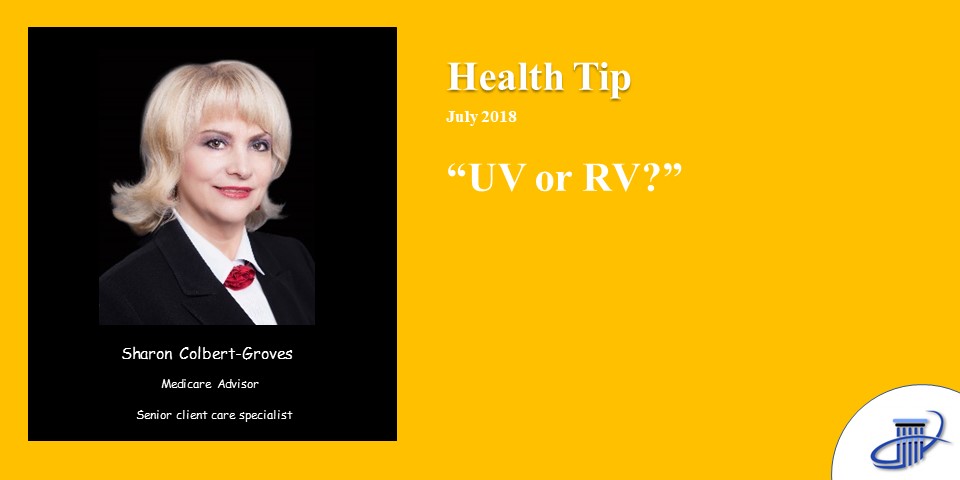UV or RV?
No, we’re not talking about your Winnebago. We’re talking about the rays of the sun. Exposure to ultraviolet (UV) radiation is a major risk factor for most skin cancers. Tanning lamps and beds are also sources of UV rays. These UV rays are the main cause of the sun’s damaging effects on the skin. UVA rays age skin cells and can damage their DNA. These rays are linked to long-term skin damage such as wrinkles, but they are also thought to play a role in some skin cancers. UVB rays have slightly more energy than UVA rays. They can damage skin cells’ DNA directly and are the main rays that cause sunburns. They are also thought to cause most skin cancers. UVC rays have more energy than the other types of UV rays, but they don’t get through our atmosphere and are not in sunlight. They are not normally a cause of skin cancer.
UV rays are strongest between 10:00 a.m. and 4:00 p.m. and more reach the ground at higher elevations. These harmful rays can even get through on cloudy days. When they bounce off water, sand, snow, or pavement, their effects can be heightened even more.
Sunscreen does not block all UV rays and should not be used to prolong time in the sun. Even with proper sunscreen use, some UV rays still get through. Consider sunscreen as one part of your skin cancer protection plan, especially if staying in the shade or wearing protective clothing aren’t available as your first options. Sunscreens with lower than 15 SPF must now include a warning stating the product only helps prevents sunburn, not skin cancer or early aging.
Broad spectrum sunscreen: Products can only be labeled “broad spectrum” if they have been tested and shown to protect against both UVA and UVB rays. Some of the chemicals in sunscreens that help protect against UVA rays include avobenzone (Parsol 1789), ecamsule, zinc oxide, and titanium dioxide.
Water-resistant sunscreen: These are no longer allowed to be labeled as “waterproof” or “sweatproof” because these terms can be misleading. Sunscreens can claim to be “water-resistant,” but they must state whether they protect the skin for 40 or 80 minutes of swimming or sweating, based on testing.
What should you do?
*Protect yourself! Wear a wide-brimmed hat or put on a shirt. Some clothing will block harmful rays. *Wear sunglasses that block UV rays. They should block 99% to 100% of UVA and UVB rays. *Seek out shade when outdoors. *Avoid tanning beds and sun lamps. *Protect children from the sun and harmful rays. *Generously apply sunscreen and reapply at least every two hours.

